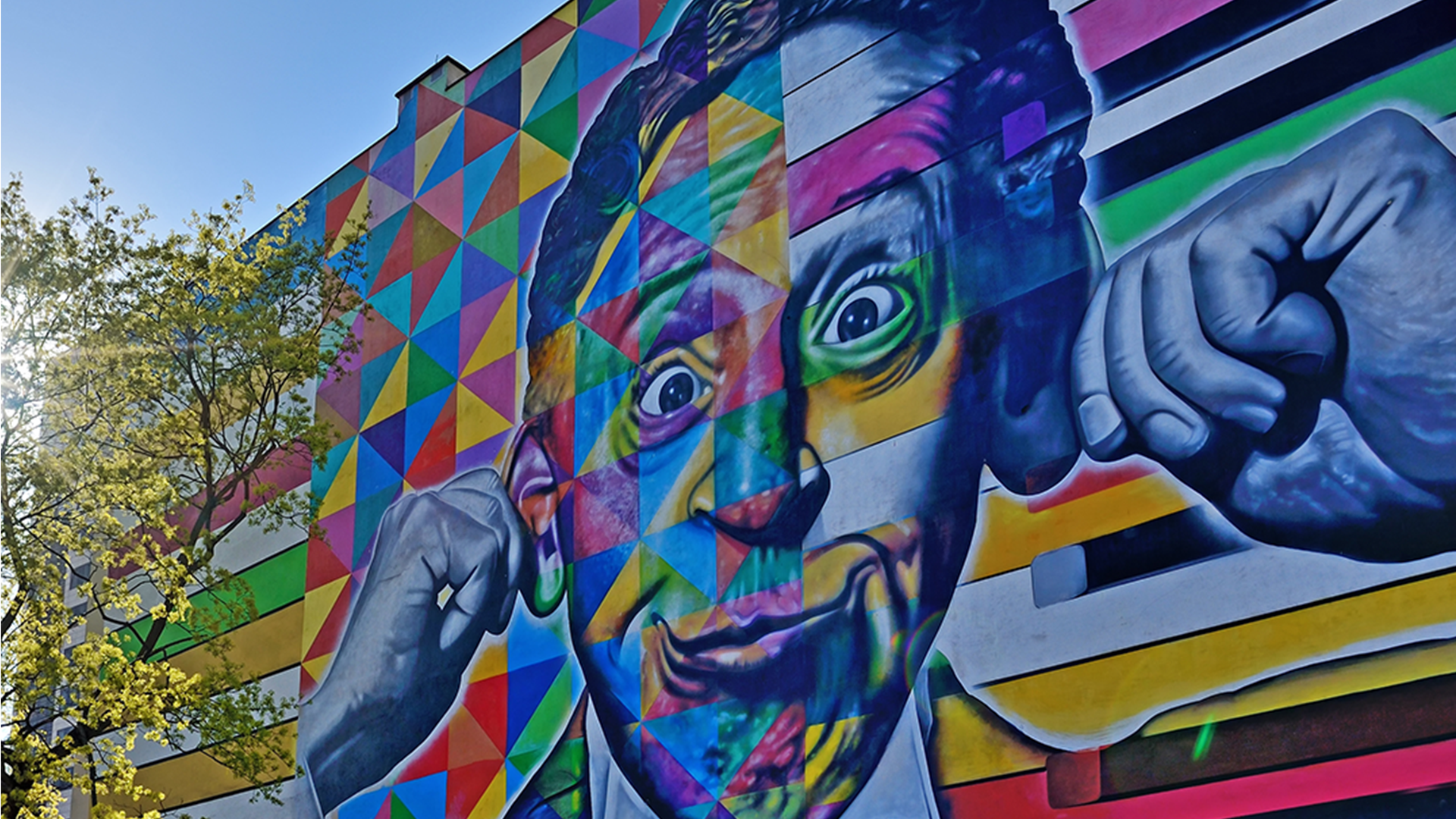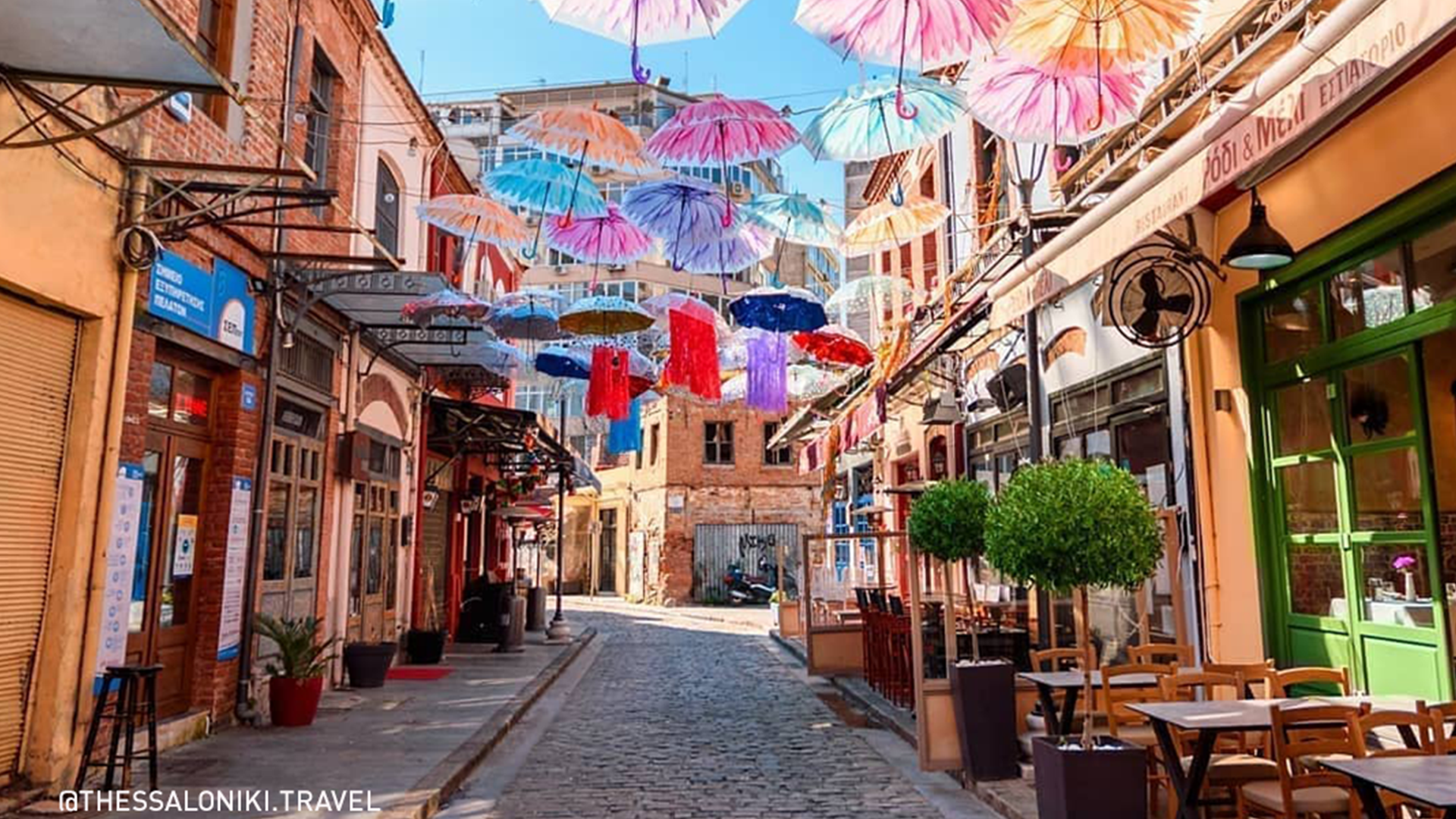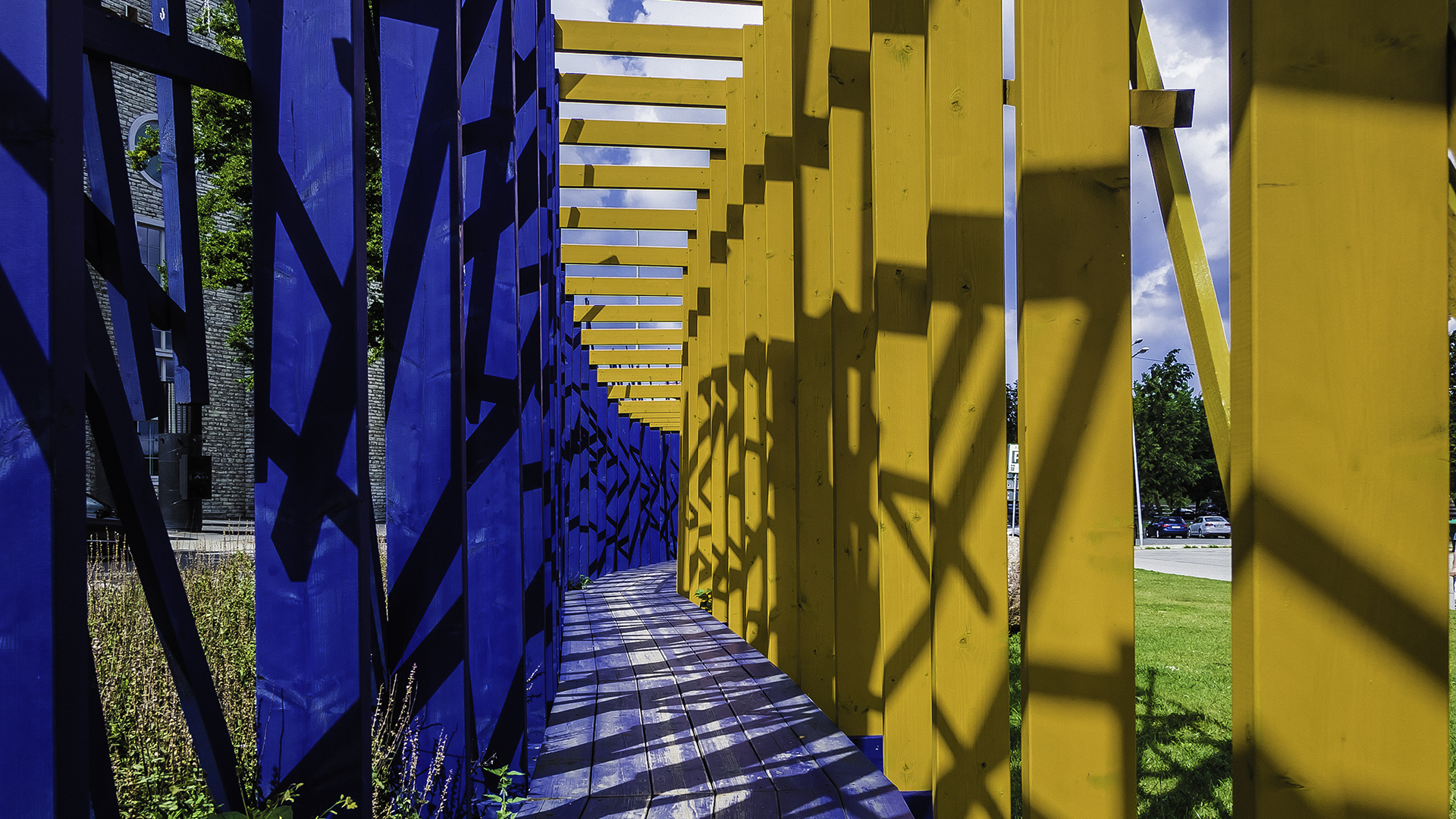European Street Art
If you ever found yourself strolling on a summer’s day through the center of Łódź, Poland, one of the country’s biggest cities and a former industrial hub, you would notice something striking—on seemingly every third or fourth block, a talented artist has created a remarkable work of street art. On Sienkiewicza Street number 18, for example, you would come face to face with a colorful, whimsical, building-size portrait of the virtuoso Polish-American pianist Arthur Rubinstein based on the famous photo of him making a goofy face and tugging on his ears. Łódź, Rubinstein’s hometown, is actually one of the top destinations in Europe for those who love street art. All around the city, a curious explorer will find outdoor art on a massive scale. Paintings regularly stretch across the entire façade of a building, giving viewers a unique way to experience art, one that is nearly impossible within the confines of a museum. Among some of the Łódź’s top outdoor paintings are “Woman in the Bath,” on Pomorska number 67, the Aryz and Os Gemeos Mural on Roosevelta number 5, and the Bird Mural on Kilińskiego number 127, several of which were created through collaboration by people from various European countries. These incredible paintings, which number nearly fifty throughout the city, have breathed new life into Łódź and transformed it into a unique open-air art gallery that visitors can explore at their leisure—with a coffee in hand, with a snack in their pocket, with the whole city around them.

Łódź is one of the finest examples of street art in Europe. But many cities across the continent have become the canvasses for a generation of young artists who are breaking away from traditions and expanding how they create art and how they wish viewers to experience it. In Tallinn, the capital Estonia—which is just a train ride away in borderless Europe!—visitors will find another example of marvelous street art. Start in Tallinn by walking the so-called cultural kilometer, a stretch of pedestrian and bicycle road that extends from the harbor to the city center and is home to a great mix of graffiti, street art and much more. Along the way, stop at the Kultuurikatel, one of the city’s most interesting cultural and events space in a converted building. If you are looking to leave the capital get a taste for Estonian city life off the beaten path, take the train to Tartu, which is only one hundred and eighty kilometers away. Tartu, especially in the summer, is an excellent destination for outdoor art. Check out the Stencilibility Festival, held each summer in Tartu, which believes that public space belongs to everyone who uses it.

After exploring street art in Poland and Estonia, why not take a trip south to the Greek city of Thessaloniki, another home to street art worth seeing. As you explore this richly historic place, you will see that street art seemingly exists in every alleyway, on every corner, upon each building, which makes Thessaloniki seem like one giant canvas covered in color and creativity. Artists are even known to paint trees in Thessaloniki! A great place to start is the neighborhood around the university followed by the downtown area, where young creative types often congregate and street art is especially dense. Keep a particular eye out for activism and politics appearing in the street art of Thessaloniki.

As with the art you might find within the walls of a museum, street art is a perfect topic for discussion and debate. While you explore outdoor paintings in Łódź, Tallinn, Tartu, Thessaloniki or any of the many creative cities on this continent, ask your traveling companies what street art means to them. Does it differ from a painting or print in a museum and if so, why? Is there a distinction between graffiti and street art, and if there is one, what is it and why? Does it mean something that over time, street art might disappear in the rain and wind of a city street rather than be preserved under lock and key in a museum? These discussions are important, which is why we suggest that you take them online once you have finished your trip. Upload pictures of the street art you discovered to social media and add some thoughts or reflections on the questions above. You can also include the ideas your travel companions came up with. Make sure to use the hashtag, #CreativelyCurious, so that other people can join the discussion with you. Happy urban art hunting!